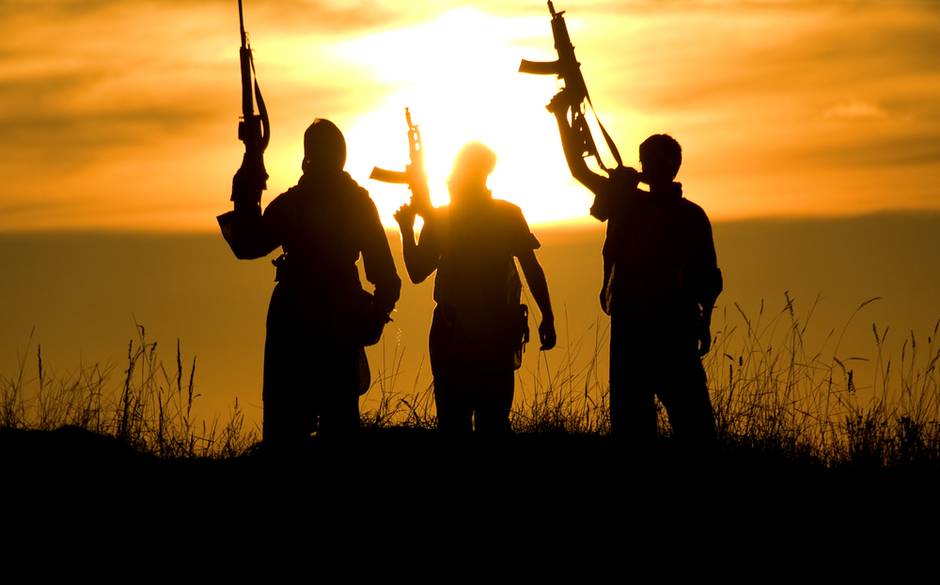Who does not know the role played by state sponsored terrorism of Pakistan to the Indian state of Kashmir and the rest of the country? Wars, guerilla dramas, non-state actors, kidnappings, hijack, bombings by Pakistan or foreign terrorist is common in India from Delhi to Mumbai to Hyderabad.
Former National Security Advisor M K Narayanan had said that there were as many as 800 terrorist cells operating in the country. As of 2013, 205 of the country’s 608 districts were affected by terrorist activity.
Foreign Terrorist Fighters or FTFs are defined as “individuals who travel to a state other than their state of residence or nationality for the purpose of the perpetration, planning or preparation of, or participation in, terrorist acts or the providing or receiving of terrorist training, including in connection with armed conflict”.
With their presence they increase the intensity, duration, and complexity of conflicts and may constitute a serious danger to their states of origin, transit, destination, as well as neighboring zones of armed conflict in which they are active.
Read more: Modi govt accepts 41% increase in crimes in name of community, religion
From Al-Qaida, the Islamic State in Iraq and the Levant (ISIL, also known as Da’esh) and associated groups have attracted over 30,000 FTFs from over 100 member states. Attempts to combat the threat through a purely domestic approach will not work. Because the related challenges are by their nature international, only through international cooperation they can prevent FTF travel.
India has the world’s third largest Muslim population at nearly 175 million. The number of ISIS recruits from India in custody has gone up to 54. Till now, six Indians have reportedly died fighting for ISIS in Syria. The war fronts of Syria were a dream destination for Indian ISIS recruits. But now the indigenous sympathisers are being prepared to unleash terror on home soil. Who can forget the role of Jakir Naik, the preacher who inspired youth to become terrorists?
Intelligence officials say the new trend of ISIS aspirants working as “freelance jihadis” is alarming. “ISIS modules being set up in India is more dangerous than some youth wanting to travel to Syria,” said a counter-terror official.
Many of young people are considering travelling to areas where their personal security would be at risk. The departure of so many young people to conflict zones has a profoundly destabilising effect on their communities and, above all, on their families. In order to attract individuals to its cause, ISIL exploits socioeconomic grievances and feelings of alienation, marginalization, discrimination, or victimization, precipitated by a host of factors, including real or perceived lack of opportunities, lack of good governance, inequality, injustice, and feelings of injustice.
The FTF threat is evolving rapidly and is unlikely to be fully contained in the short term. A significant longer-term risk is posed by FTFs returning to their countries of origin or upon their arrival in third countries.
The National Intelligence Agency this year busted an ISIS-inspired terror module called “Janood-ul-Khalifa-e-Hind”, or the Army of Caliph in India, carrying out countrywide arrests. Investigations have also revealed the group was making efforts to establish a channel of procurement of explosives and weapons, identify locations to organize terror training camps, motivate new recruits to target police officers and foreigners in India apart from carrying out terrorist activities in parts of the country. NIA claimed that those arrested were found to be in communication with some active members through chatting applications in order to motivate them to join ISIS.
Though there may be natural limits on the Islamic State’s success in India (such as Indian jihadists being preoccupied by the Kashmir conflict), the porous borders between Bangladesh and India and the rising tensions in refugee camps related to the Rohingya refugee crisis are particularly concerning. The CIA-NIA joint counterterrorism operation in January 2016, where the CIA reportedly alerted the NIA to a north Indian ISIS cell, was successful in capturing members of the cell.
According to a National Intelligence Agency charge-sheet issued against 16 alleged extremists in July, authorities also believe Shafi Armar, a notorious Indian Mujahideen member believed to be in Syria, has been actively trying to groom recruits back home. Subahani Haja Moideen, one of six members of an alleged extremist cell arrested in northern Kerala in October, is believed to have actually returned from fighting with Isis in Iraq, where he reportedly met with some of the alleged organizers of the Paris terror attacks.
For India, not only cross border terrorists from Pakistan create problem but the Indian youth who have read and travelled abroad or sympathy with ISIS ideology are also a threat to National Unity and integrity a check on them is necessary with the cooperation of the world where they have visited through this way we can make our world safe and secure.
Disclaimer: The opinions expressed in this article are the personal opinions of the author. The facts and opinions appearing in the article do not reflect the views of NEWSD and NEWSD does not assume any responsibility or liability for the same.


















